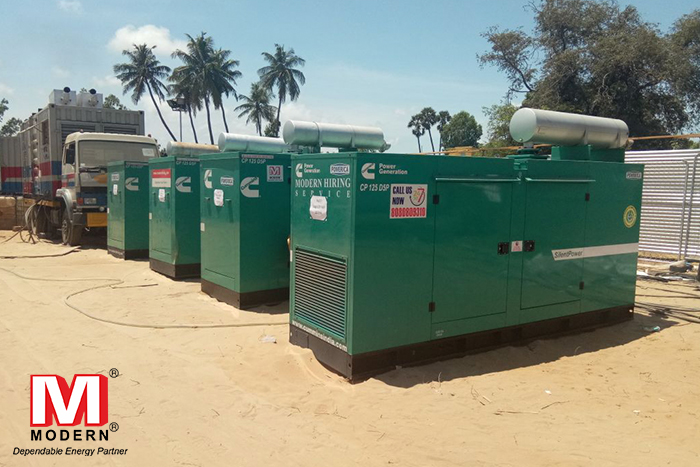
Complete Diesel Generator Maintenance Guide
Battery inspections: Batteries might malfunction when starting up a generator that has been idle for too long. Additionally, cables, connectors, and chargers may start to degrade, making it difficult to deliver the necessary electrical power to the battery. A visual examination should be performed to look for any leaks, pollutant buildups, and general deterioration in order to prevent these sorts of failures.
Running the Generator: A generator should be started often, even while it is not in use, to avoid the fuels from being stagnant and deteriorating. A qualified technician should do fuel testing on a generator if it has been idle for more than six months.
Fluid inspections: To function, diesel generators need a variety of fluids, including coolant, lubricant, and fuel. The manufacturer’s instructions should be followed while topping off these fluid levels, which should be checked often. A qualified technician should also be called to report and examine any system leaks.
Checks for contaminants: Coolant, lubricating oil, and fuel contaminants can all lead to major problems with a generator. To prevent any stagnation, check your fluids often with a gauge and operate the generator at specified intervals. Call a technician to examine your system if you observe any strange results.
Checking the dashboard of the generator before starting it up can give you a quick indication of any issues with the system. Check that “auto mode” is on before starting the generator; this is among the most frequent and readily fixable causes of generators not starting.
Recommended Diesel Generator Servicing Cycles
A diesel generator’s use and running duration will determine the recommended service intervals. As a general rule, your generator should undergo a thorough examination and servicing once every six months or 400 operating hours.
Regular visual inspections allow you to stay on top of any system failures and may necessitate repair sooner than you had anticipated. Some of the circumstances that may necessitate more regular inspections include:
Environment: The generator’s parts can be harmed by exposure to extremely high or low temperatures or bad weather. Caution should be given to minimize excess exposures to salt water blown by the winds if your generator is located in a coastal area, including a port or shipyard.
Pollutants: The generator’s interior components may be harmed by airborne contaminants like dust and sand. A generator on the building site or in a setting like that could need extra maintenance.
Lack of Use: In a similar vein, generator exercise should be performed if generators is left idle for longer than anticipated to prevent battery failure.
Placement Advice for Standby Generators
To avoid any difficulties during operation or maintenance, the generator’s location should be carefully examined. Our top recommendations for placing a diesel generator properly are:
- Help ensure your generator has a sufficient and unhindered source of electricity. Excessive wiring and pipework can increase expenses and decrease efficiency.
- Generators need a sufficient air intake to breathe effectively. Additionally, exhaust fumes from generators may be unpleasant and unhealthy, so make sure your generator is positioned in a room with appropriate airflow.
- The generator needs to be shielded from the elements with a cover or guard.

